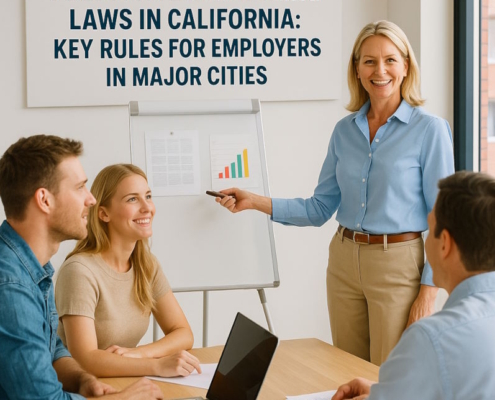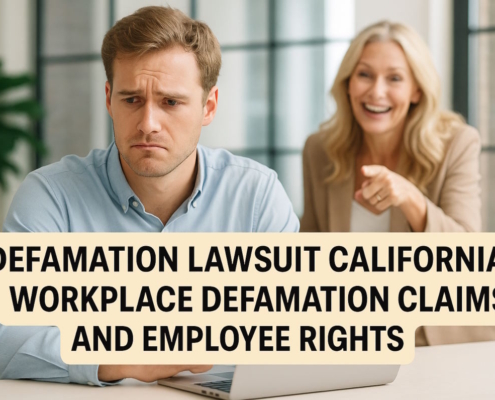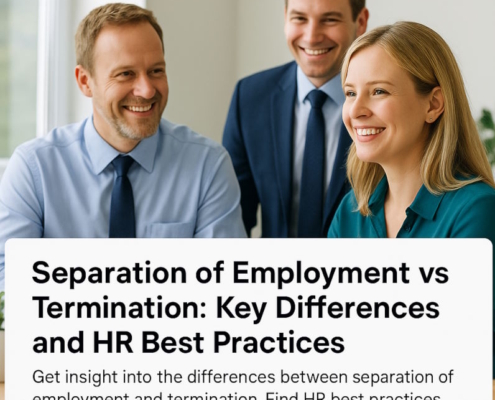What is organizational design?
Up until around twenty years ago, organizational reform occurred every couple of years, if not decades, at most companies. This is something that most company leaders would only do a few times in their lives. But technology and the need to stay competitive have sped up the rate of change in businesses.
Organizational change was normal by 2015. A study by McKinsey found that 60% of businesses had changed how they did things in the last two years. A further 25 percent had done it at least three years ago.
Then the pandemic of 2020 happened and caused a lot of changes. What used to take ten years to happen to most businesses happened in just a few months.
We used to have time to get used to a transition before the next one started, but groups that are successful today have made change a way of life. This doesn’t mean simply moving around firniture. The new changes have made a huge difference in how we work.
It’s true that many companies are just getting by and hoping they can stay open until things get back to how they were before COVID. The most successful, on the other hand, are using new models for organizational design that expect and welcome change, which makes them change how they work on the spot.
People have used conventional organizational models to make sure that operations and structure are in line with business strategies. This article looks at some of those examples. We’ll show you how these models may still be used as testing tools to find out where different aspects of an organization might be out of whack.
Then, we’ll show how companies have switched from flat models for alignment and analysis to adaptable models that help them deal with constant change.
It is the organization’s framework that helps it carry out its strategic plan and reach its goals. The organization’s plan determines the best way to set up its structure.
Organizational design is the process of making the best system for:
- Putting the plan into action in light of the outside world.
- What the organization’s strengths, flaws, skills, and style of leadership are.
In terms of organizational design, there is no set standard. The requirements of each company are unique. You probably won’t be successful in the long run if you copy the approach and methods of another business.
This is why organizational designers rely on frameworks rather than strict guidelines.
What do organizational design models actually do?
An organizational design model provides a theoretical basis for how a company does the following:
- Find out what its present state is,
- Imagine a successful future
- Give the company a sense of meaning, worth, and culture to help it grow
Diagnostic models
The 1970s and 1980s are when the majority of the business models we use today got their start. The people who made them were trying to move businesses away from the hierarchical models of the industrial period and toward simpler, more responsive ones.
When it comes to organizational design, each company has its own set of priorities and problems. Knowing about the common types of organizational design models can make it easier to pick the proper tools to figure out what’s wrong with your working models and change them.
1. The 7S Design Model from McKinsey
Most people have heard of and used the McKinsey model as a design tool.
Its goal is to figure out how well a group works by looking at how 7 key elements work together. To do that, you don’t just look at one part or think about it in terms of strategy; you look at how all of the parts balance and work together as a unit.
First, the structure, tactics, and systems that are “hard”:
- Strategy tells the business how it is going to compete in the marketplace.
- The organization chart shows how structure sets up the different parts of a business.
- The way a company makes decisions, makes things happen, and runs its business is based on its systems.
These things are easier to handle than “soft” things like style, shared beliefs, skills, and staff:
- There is a competency framework that connects the organization’s competencies to each person’s knowledge, abilities, and skills, as well as the analytics needed to handle them. Skills are what the organization can do.
- The staff is the people who work for you and how you handle them.
- Style is the way that top leaders run a company and the meaning that they give to different groups of people.
This is what the 7s model is all about: shared values are the rules and norms that everyone in the company will follow.
The good things about the 7s model:
- Instead of just focusing on structure and strategy, the McKinsey model’s value is that it balances the important parts.
- During acquisitions and mergers, it can be helpful to combine different methods and functional parts.
- 7s can help businesses implement the policies, rules, and plans they’ve developed.
- You can make analytics with the model to see how changes affect things.
Bad things about the 7s Model:
- There is no action plan for managing change in the McKinsey model. It’s a static look at how all the parts of the company work together.
- Some people say that it only looks at internal factors and not outward ones. However, by definition, making a strategy means looking at what’s going on in the outside world.
The model doesn’t clearly show how well or how effectively an organization works.
Some people have said that the 7s model isn’t very good at finding holes in plans or execution. It’s important to remember that McKinsey, as with other consulting companies, built its models as guides for organizational design advice. Its original goal had nothing to do with making organizational changes on your own.
2. The Star Model by Jay Galbraith
The Star Model is a way for managers to control how their employees behave by using a series of planning policies:
The “fundamental direction of the corporation,” its missions and values, and its aims and objectives are all defined by strategy. It also provides the conditions for deciding among different organizational structures that strategists use to prioritize tasks.
Structure looks at four areas to figure out where power and control lie in an organization:
- Specialization means having the right skills for the job in order to do it.
- Shape shows how many people are in each level of an organization’s units or span of control.
- Vertical power distribution determines how hierarchical or flat an organization is. Lateral power distribution means moving power to a division that is dealing with important problems.
Departmentalization refers to the process by which an organization is divided into subunits based on criteria such as market size, client base, workflow procedures, geography, and functions.
Processes are the ways that information and decisions move through a company. Horizontal (lateral) processes make the work move, while vertical processes decide how to spend money and hire people.
Reward systems help employees reach the same goals as the company. In order to do that, they need to fit in with the rest of the style.
People means making sure that the functions and policies of human resources work together to help both individuals and the company grow.
Pros of using the Star Model:
- Galbraith backs up his plan with a huge library of books and guides.
- The model lets you give a thorough description of its parts and how they work together.
Bad things about the Star Model:
- It doesn’t talk about culture and meaning as things that drive people. Instead, it seems to be based on a Pavlovian view of what drives people.
- Outputs and sources are not part of the model.
3. The Six-Box Model by Weisbord
In 1976, Marvin Weisbord showed off his model, which was based on his work on making a useful tool that anyone can use.
He said it helped him quickly broaden his diagnostic approach from issues between people and groups to the more complex situations in which companies are run.
He shows how to handle the connection by picturing the six parts as dots on a radar screen, similar to how air traffic controllers handle the distance, height, and speed of an airplane.
The Six-Box model, similar to other organizational design models, is an analytical tool used to figure out how things relate to each other and how to balance them.
- Purpose: What kind of business is it
- Structure: What roles do we play in doing the work?
- Relationships: How do we handle disagreements (manage people)? What tools do we use?
- Reward: Is there a reason to do everything that needs to be done?
- Leadership: Is there someone making sure the boxes are balanced?
- Helpful Mechanisms: Do we have the right tools for coordinating?
Weisbord’s method is comparable to Galbraith’s, and both of these approaches have the potential to be useful as diagnostic tools.
Weisbord, like Galbraith, has a lot of works and guides that explain how to use their models.
Benefits of the Six-Box Approach:
- Looks at data and information from inside and outside the company.
- Checks the structure of communication to efficiently handle information.
- At the beginning of each box, there are diagnostic questions that set the stage for the study.
- It begins with a goal, which has been very important in later models.
Bad things about the six-box model:
- The model doesn’t seem to talk about balance, so it’s possible to focus too much on some things and not enough on others.
Models that enable transformation
As organizational design has grown as a field and set of tools, it has become more about managing change well than making diagnoses.
There are times when change models can be very useful for diagnosing problems, but they focus more on the path to greater efficacy and the people who work in a company.
1. Model for Transformation
In 1995, the Center for Organizational Design made the Transformational Model. It is a framework for organizational design that helps leaders understand their companies and guides a successful remake.
The model has eight factors that make up an organization’s environment. The goal is to understand and control these variables so that they are in balance.
Environment. The business is like a living thing; it can only stay alive if it stays in harmony with its outside environment. This includes competitors and the social, political, and legal climates.
Strategy tells the company how it will compete by giving customers more value. It includes growth goals and performance targets. Strategy tells the company where it wants to go.
Core Process is how work moves through a company and includes all the tools and technology that make it possible. All other company activities are based on core processes.
Structure tells us about the boundaries, jobs, responsibilities, and supervisory relationships in a business. It also shows how people are organized around business processes.
Systems are the actions and responsibilities that structure and direct labor. We are likely more used to referring to them as functions. As an interesting aside, the Center says that the best systems are frequently the simplest.
Culture is what makes a company work and how well it puts strategy into action.
Metrics that are well-thought-out are the key to understanding performance. Results show how well the company works.
Leadership devises objectives and keeps an eye on progress, outlines the organization’s mission and goals, and plans its future.
What’s good about the transformation model:
- It helps us figure out how people react to change better.
- The Center gives a seven-step plan for designing organizations.
What’s wrong with the transformation model:
- The one-way flow doesn’t draw attention to how the eight parts work together.
2. The Model of Congruence
The Nadler-Tushman model is a six-step plan for making sure that all of an organization’s parts work together properly. It looks at how people communicate and share information to see how well four parts fit together.
Work is the things that workers do and how well they fit with the goals of the company.
Regarding pay and developing their potential, “people” means their knowledge and skills, as well as their experience and schooling.
Structure makes sure that what a group does and what it wants to do are both the same.
Norms and values, patterns of behavior, and both unspoken and written rules make up culture.
Pros of the congruence model:
- That model is very basic and simple.
- It talks about both official and informal parts of organization.
- It needs the boxes to be congruent, which means they must agree.
What’s wrong with the congruence model:
- The model might leave out important details if it is too general.
3. The Burke-Litwin Framework for Organizational Change
You could use the organizational change model to find problems, but its main job is to help organizations change.
Burke-Litwin is a system for figuring out where and how change happens in a company.
The framework covers a lot more ground and is more complicated than most models for designing organizations. It classifies twelve elements into five categories. The groups directly below and above each one have an effect on it.
Outside causes are at the top of the list because they make change necessary.
Some strategic factors are the organization’s strategy or purpose, its leadership, and its culture.
Structure, management methods, and systems (such as policies and procedures) are examples of operating factors.
Things that affect a person are the climate of the work unit, their tasks and skills, their motivation, and their own needs and beliefs.
Outputs include measures of success for individuals as well as organizations.
Pros of the Burke-Litwin Model for Organizational Change:
- It covers important things like what motivates people, the work environment, how managers run their businesses, and each person’s wants and values.
- A feedback loop displays the connection between a person’s abilities, their actions, and their intended plan.
- A feedback loop shows that people’s wants and values both shape and are shaped by organizational culture.
What the Burke Litwin Organizational Change Model Doesn’t Do Well:
- For some, it will be too hard to understand quickly. Contrarily, the detail might be an asset to someone else.
Experimental frameworks
Organizational design as a field is evolving at the same breakneck pace as the world around it. We want you to think about these two types of organizational design.
1. Helix Model from McKinsey
In 2020, McKinsey found that the current agility and matrix models made companies too hard to understand, slow, and rigid. So, they created the helix organizational design model.
The model’s name comes from the idea of DNA molecules having a double helix shape. It means setting up two separate, parallel lines of responsibility that work together but are still separate.
The tool splits control of people into two groups of tasks:
The first is creating value, managing daily tasks, and making sure the customer is happy. We wonder if Sandy Ogg’s “Talent to Value” idea changed the way they thought about this. As Ogg sees it, the organization’s main goal should be to offer the best people wherever the company makes money.
The second is skills. Set standards, help people and tools develop, and push for excellence.
The person works for two managers, but their time and attention are not split between them, just like in matrix companies. They do different things.
We consider the helix to be rather experimental due to its complex design, but early results have proven promising.
McKinsey gives four suggestions to ensure success:
- Make resource planning clear, flexible, and value-driven, and make it necessary to do regular company reviews to decide how to organize and assign resources.
- Set up an internal talent market to match people with jobs that match their skills based on supply and demand.
- Help leaders who are changing the way they think and act. To align resources with business needs, the model needs a mindset of working together.
- Make sure that both jobs are involved in managing performance and giving feedback.
What’s good about the Helix Model:
- It makes it possible to switch from creating value to getting the best ROI.
- The arrangement makes things simpler and more adaptable.
- It helps people make decisions more quickly.
- Also, it gives workers the power to act.
Problems with the Helix Model:
- The model calls for big changes in how the company works and how leaders run things.
- Giving up power and having “a healthy dose of humility” are necessary for it to work.
2. Holonic Business Model
By letting people handle their own information and resources through the internet, the holonic model helps global virtual organizations.
That way of thinking isn’t new; Arthur Koestler came up with it in 1968 and published it in 1970. Koester looked into how biological and social processes tend to organize themselves. He came up with the word “holon” to describe a state in which something is both a whole in its own right and a part of a bigger system. Or an important part of a bigger scheme.
It comes from the Greek words holos, which means “whole,” and -on, which means “a piece or part.”
There are three levels of how the holonic business works:
The global level of inter-enterprise collaboration
When used in the business sense, the word refers to a group of companies that work together to make goods or provide services. In the past, we’ve thought of this as a supply line that goes from the buyer to the producer. But if we think of the system as a holonic business, we can see that each holon is trying to be as efficient as possible. It works as a separate entity while working with the larger business. A customer in the chain wants to work with the provider that is the most responsive and efficient. The seller wants to sell to the customer who will pay the most. The result is that the whole collaborative effort works better.
The level within the enterprise:
As part of the holocracy, each business must plan its own resources to meet the needs of the collaborative cluster’s coordination. This group needs to plan and change the schedule of its resources on the fly, which includes rearranging their functions. When something goes wrong, like a machine breaking down, the company resources need to be re-clustering.
The machine level (physical agent):
The third level is in charge of controlling the tools that do the work across multiple levels. Flexible manufacturing with intelligent distributed automation parts that can reconfigure themselves does the distribution.
3. The Model of Flexible Organization
Since the flexible organization is not an experiment but rather a tried and true method that lean startups and innovators employ to shake up markets, we have chosen not to incorporate it into our experimental organizational design models.
It’s what speeds up the process of organizational change. When your company uses these new methods, it becomes a disruptor.
If you read Deloitte’s report Unlocking the Flexible Organization: Organization Design for an Uncertain Future, you can find a plan and a way for any company to become flexible and able to adapt to the market.
The structure of traditional businesses is built on organizational silos that produce the same results over and over again in markets that are easy to predict. They are complex, have many levels, and don’t like change.
That model is no longer good enough. Things change quickly in the markets today, and models that are too rigid will fall behind rivals that can adapt more quickly.
Networks of self-managed teams that work together to reach a goal will be the way businesses work in the future.
Most radical changes don’t work, but Deloitte has found a way to let empowered teams be more flexible without upsetting the company.
They give four steps in the study to help the flexible organization work better.
Pros of the flexible model:
- It encourages creativity, working together, and new ways of thought.
- Instead of having a line of command, the structure puts the power to make decisions within the group itself.
- It builds a mindset of trust and dedication to the team’s goal.
- When there is no structure, an organization is flexible and open to change.
What’s wrong with the flexible model:
- You can’t rush it or execute it in a way that disturbs the center. Allow time for the culture to get used to teams working on their own.
- Training managers suitable for the new setting will be an ongoing process.
- People who work as traditional command and control bosses might need to be removed.
This is just a brief synopsis of the subject. Before you do anything, you should read the whole study.
This is not something you should try by yourself. Find a partner with a lot of experience who has helped other businesses create independent teams that have delivered real results.
Picking out an organizational design model
In order to maximize the impact of your work, we have some suggestions:
Pick the right partner. Talk to other groups that have worked with your possible partners and check their references. Find out more about how your possible partner helped their business.
Start with a goal and a plan. Your attempts could fail if you don’t have that solid base.
When you look over your organization’s goals and objectives, give your organizational responsibilities some serious thought. Look at all the outside and inside elements that influence your business.
Think about what the company needs now and in the future. Always think about how things could change. Do not go on the defensive to protect where you are now. Change will bring new possibilities, so get ready to find them.
Culture is very important. It will fail if it isn’t compatible with your culture. Get the right help if you need to adapt your culture, and see it as an important part of transforming your company.
There are different models of organizational design that might not work for you. Carefully think about each one, and don’t let a model stop you from doing something. Let your research speak for itself.
Try to find change tools that work well together. For instance, your methodology for managing projects and your approach to organizing must match. Likewise, your plan for managing culture and change must also match.
It’s not necessary to complete all tasks today. It takes time to change, especially when it comes to culture. It’s important not to overestimate your abilities.
Now it’s your turn
We hope that this article has provided enough information for you to start thinking about how you want to rethink your company and how you can employ organizational design models to help you do it.
We know one thing for sure: organizational change is not going anywhere. Embrace the change happening all around you and inside your business by cultivating the flexibility to seize opportunities.































